Plate reverb is an effect that has shaped the sound of music for decades.
From classic rock albums to modern trap hits, its unique, lush quality has made it an indispensable tool in music production.
In this article, we’re going to dive deep into the world of plate reverb and answer all of your pressing questions.
Here’s a glimpse of what we’ll be covering:
- What plate reverb is & how it works ✓
- A comparison of plate reverb with other reverb types ✓
- A little bit of history about the invention of plate reverb ✓
- The 5 best plate reverb plugins on the market ✓
- Expert tips & tricks for mastering plate reverb in your own mixes ✓
Whether you’re a seasoned music producer or just starting out, understanding plate reverb can help you add depth and character to your mixes.
Therefore, your tracks will truly shine and your music will get the recognition it deserves.
So, let’s dive in…
Table of Contents
- What is Plate Reverb?
- The Mechanics of Plate Reverb
- Plate Reverb vs. Room Reverb
- Plate Reverb vs. Spring Reverb
- The Role of Plate Reverb in Mixing
- How to Use Plate Reverb for Vocals & Instruments
- Adding Depth & Space
- The Signal Path in a Plate Reverb Unit
- Transducers, Metal Plates & Vibrations
- The Science of Modulation in Plate Reverbs
- Best Reverb Plate Plugins of 2023
- Tips & Tricks for Mastering Plate Reverb
- Plate Reverb: Final Thoughts
What is Plate Reverb?
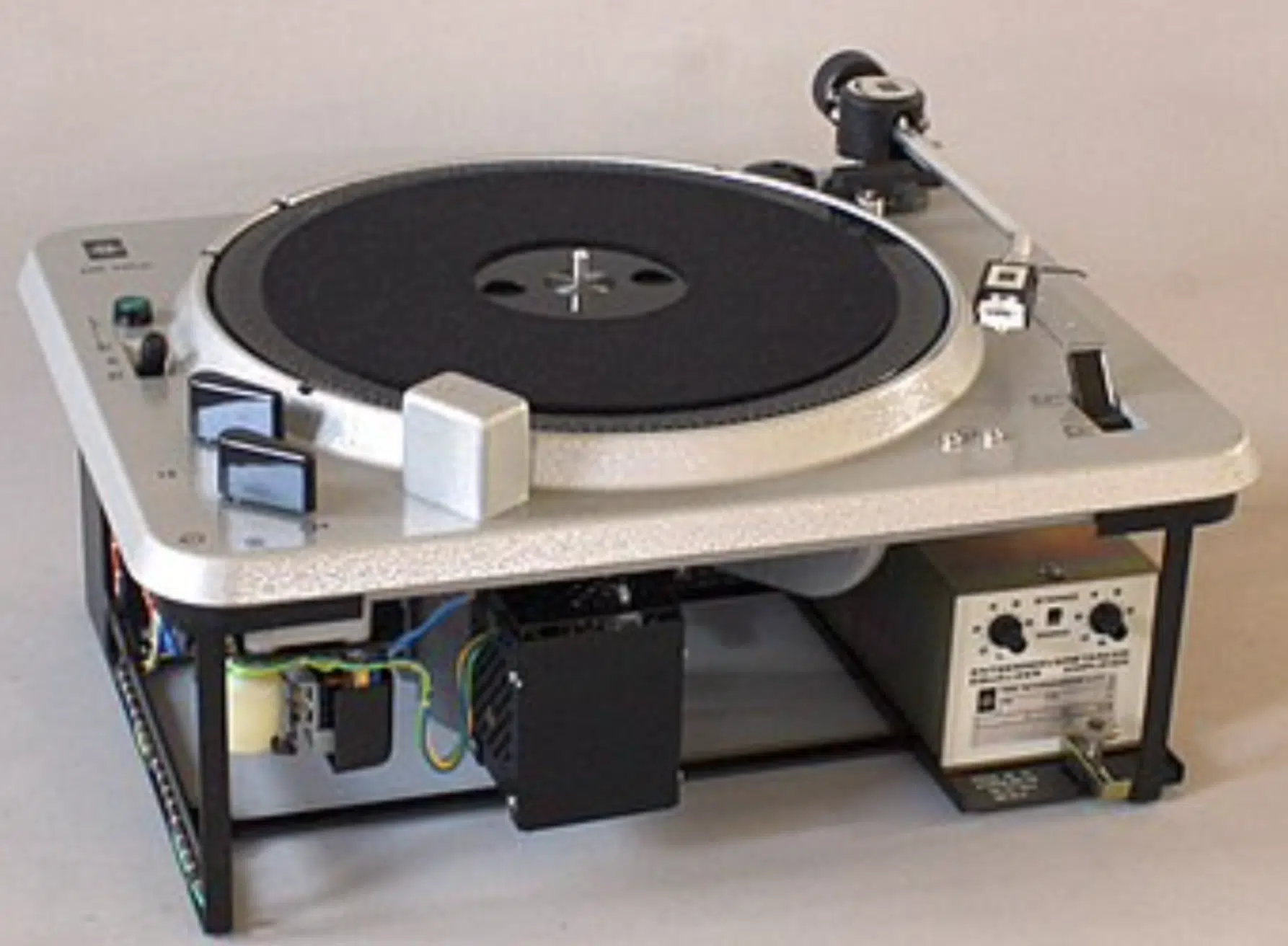
Plate reverb, a type of artificial reverb, holds a special place in the pantheon of audio effects.
At its core, it’s a reverb effect created by sending an audio signal through a large metal plate, causing it to vibrate and produce a unique reverb sound.
This sound is different from natural reverb that you might hear in concert halls or large rooms.
Instead, it’s a denser, brighter, and often more versatile sound that has found a home in countless recordings since its inception.
Invented in the late 1950s by Elektro-Mess-Technik (EMT), the German company that also pioneered the world’s first artificial reverbs, plate reverb was a game-changer in the recording industry.
Unlike the spring reverb units often found in guitar amps, which were somewhat limited in their reverb quality, plate reverbs offered higher quality and more controllable reverb sound.
This made them a go-to choice for many recording studios around the world.
One of the reasons plate reverb has remained so popular over the decades is its unique sound.
It’s often described as being brighter and denser than other types of reverb.
It has a characteristic ‘flutter’ due to the way the vibrations bounce around the metal plate.
This distinctive plate tone can add a unique character to vocals, drums, and other instruments, making them stand out in a mix.
The Mechanics of Plate Reverb
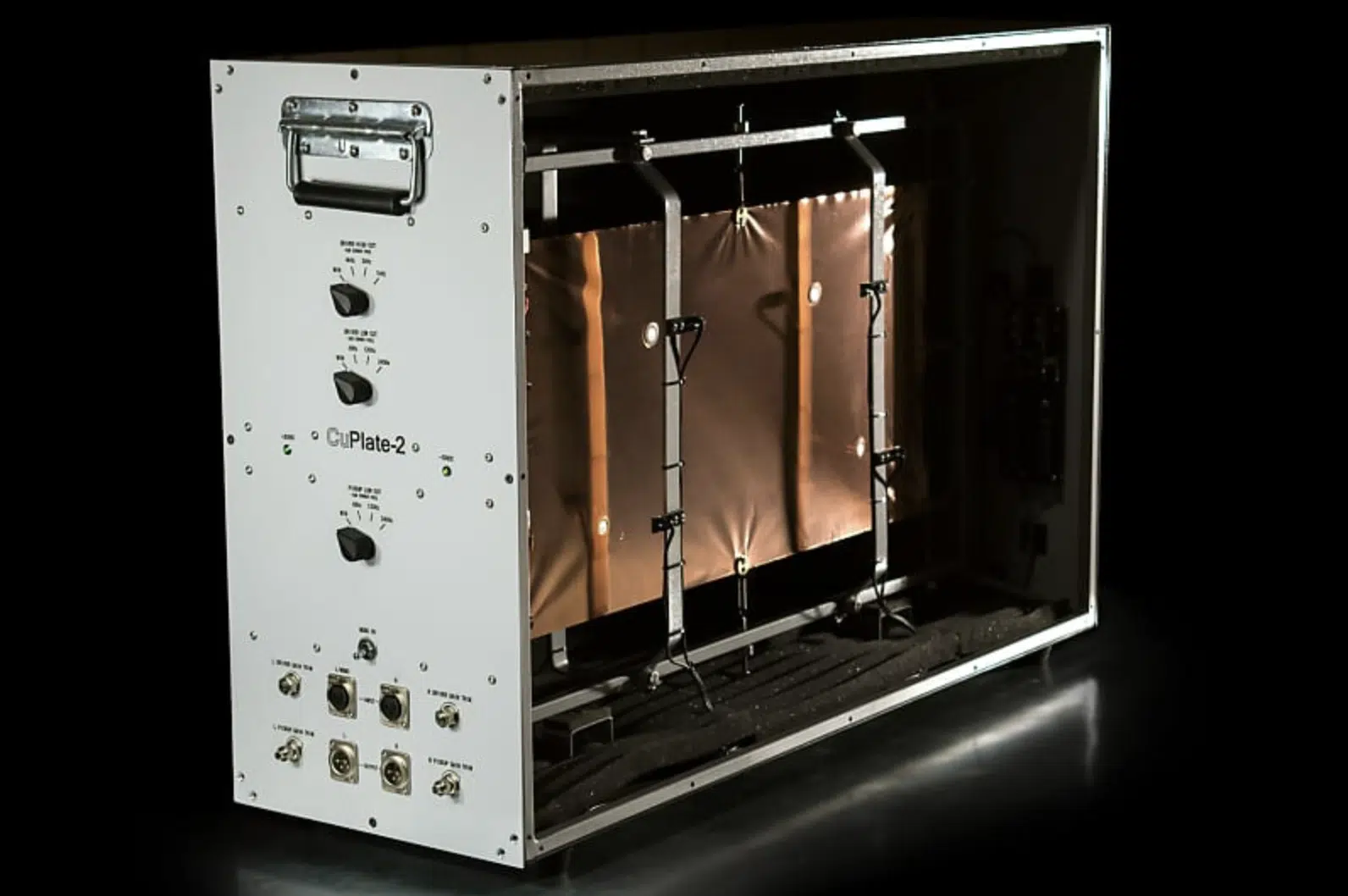
The actual process of creating plate reverb is fascinating.
The original plate reverb units were large, heavy devices that used a metal sheet (often measuring up to 8ft x 4ft).
An audio signal was sent to the plate via a transducer, which is a device that converts electrical energy into mechanical energy.
This would cause the metal plate to vibrate.
These vibrations were then picked up by one or more contact microphones attached to the plate, and the resulting signal was the plate reverb sound.
One of the key things to understand about plate reverb is that it’s a form of mechanical reverb.
That means it’s created through physical processes, not through digital reverb algorithms or by simulating the sound reflections in a physical space like a room or hall.
Which is what gave it a unique character that’s hard to replicate with other types of reverb.
Adjusting the tension of the plate could change the decay time of the reverb, and damping pads touching the plate could be used to further control the reverb sound.
This meant that, unlike earlier spring reverb units, plate reverbs allowed for greater control over the dramatic effect.
Plate Reverb vs. Room Reverb
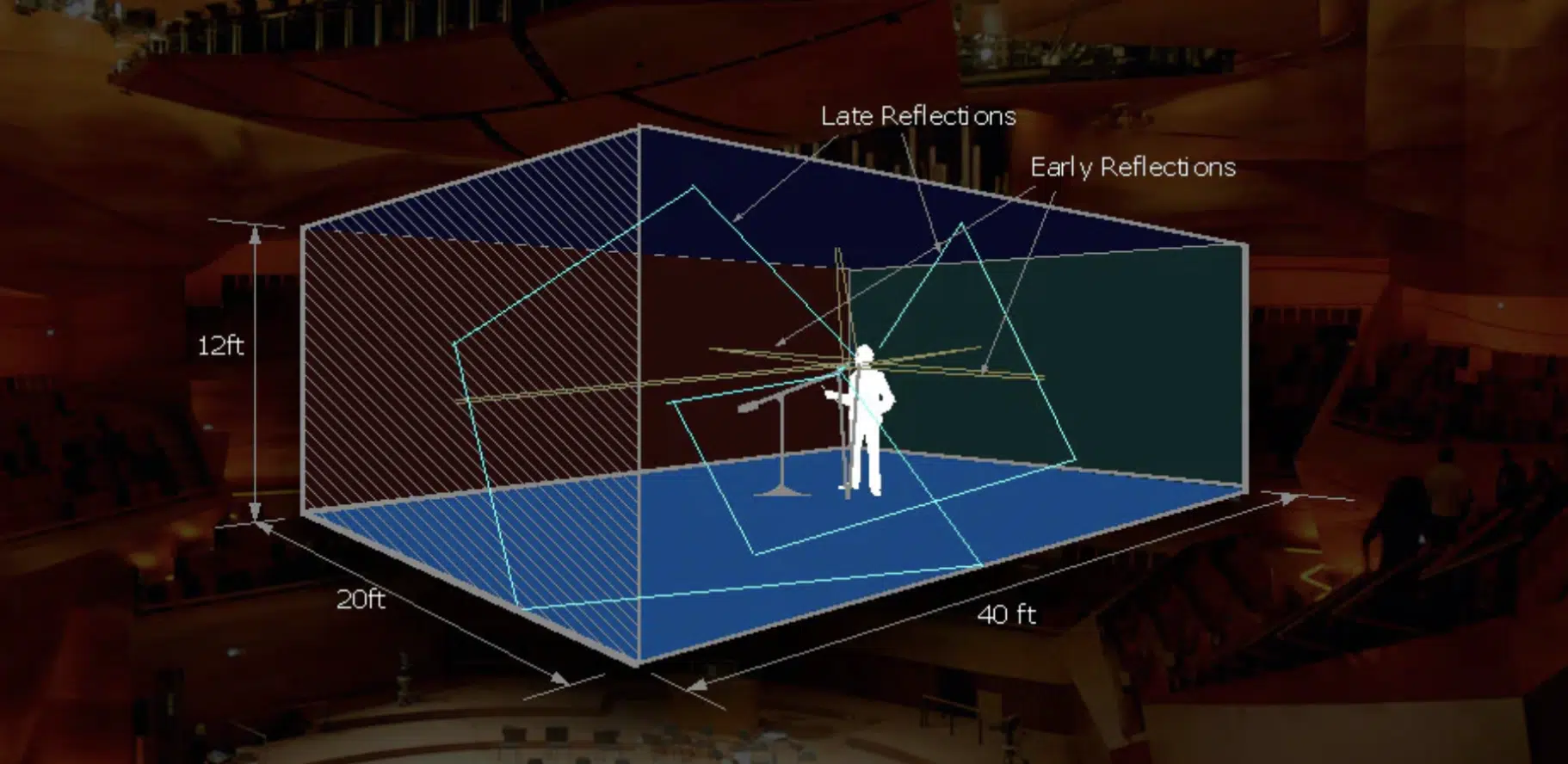
Comparing plate reverb to room reverb is like comparing apples and oranges because they’re fundamentally different.
Room reverb is a type of natural reverb that’s created by sound reflections in a physical space.
It’s a more organic sound that’s influenced by factors like:
- The size of the room
- The materials used in its construction
- The placement of the sound source
- The microphones within the room
On the other hand, plate reverb is an artificial reverb that’s created mechanically by sending an audio signal through a metal plate.
It’s a more controlled and consistent sound, and it can be manipulated to a greater extent than room reverb.
While room reverb gives you a sense of the acoustic space where the sound was recorded, plate reverb adds its own unique character to the sound.
Plate Reverb vs. Spring Reverb
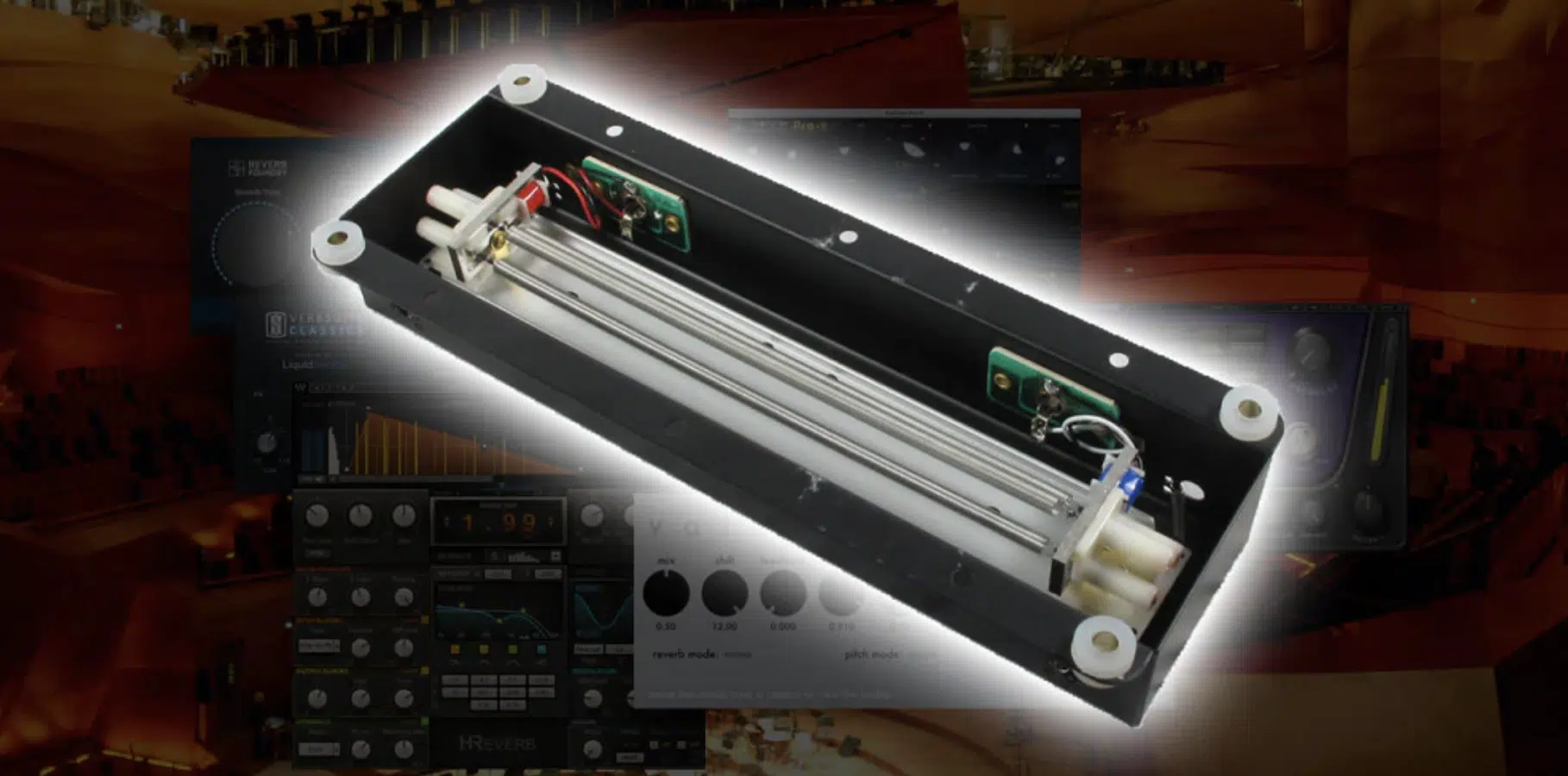
Spring reverb is another type of artificial reverb that’s often found in guitar amps.
It works by sending a signal through one or more springs, which will create vibrations.
These vibrations are then converted back into a signal, creating the reverb effect.
Like plate reverb, spring reverb is a mechanical reverb… however, the sound of spring reverb is quite different.
Spring reverbs often have a characteristic ‘boingy’ sound that can be very distinctive, especially when used on the guitar.
They also have a relatively limited frequency response and decay time compared to plate reverbs.
Plate reverb, on the other hand, offers a more refined and versatile sound.
Its brighter, denser tone and adjustable decay time make it suitable for a wide range of uses 一 from adding a subtle sense of space to a vocal track to creating a lush, dreamy backdrop for an entire mix.
The Role of Plate Reverb in Mixing

When it comes to mixing, this type of reverb is a secret weapon.
It’s the audio equivalent of a magic wand, capable of transforming dry, lifeless tracks into lush, vibrant soundscapes.
Plate reverbs are particularly effective for adding depth and space to a mix without muddying it up.
Thanks to their dense, smooth quality, they blend seamlessly into the background, filling in the gaps without overpowering the original sound.
But it’s not just about adding depth… it can also help to glue different elements of a mix together.
When you apply the same reverb to multiple tracks, it can create a sense of cohesion, making the various elements feel like they’re part of the same space.
And this isn’t just for vocals and instruments 一 it works wonders on drums too.
Whether you’re looking to add a sense of space to your snare drums or give your cymbals a bit more sustain, plate reverb is your go-to.
How to Use Plate Reverb for Vocals & Instruments
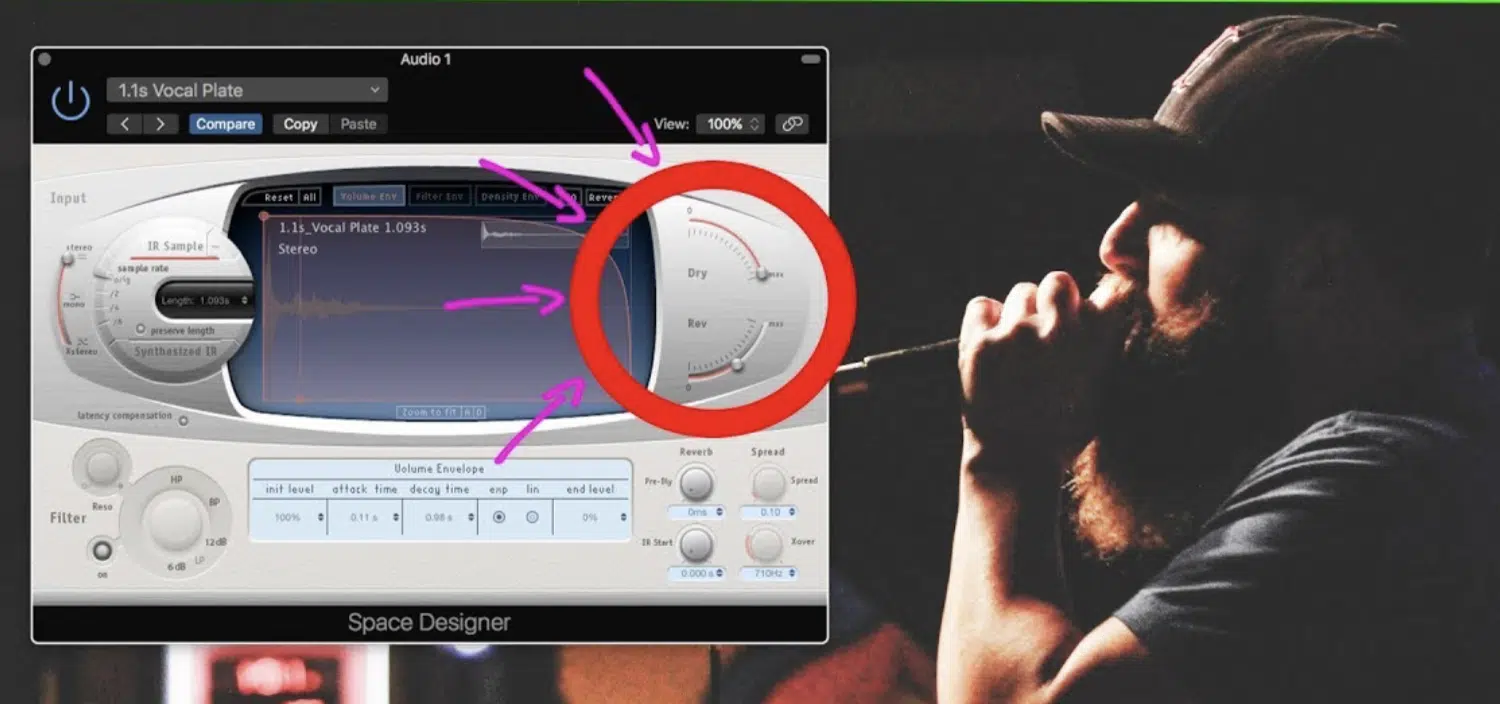
Adding plate reverb to vocals can make them shine in a mix.
It can give the vocals a sense of space and depth, without making them sound like they’re in a large room.
It’s like adding a halo around the vocals, making them stand out while still blending well with the rest of the mix.
NOTE: A classic example is the vocals on Pink Floyd’s Dark Side of the Moon. The plate reverb gives them a timeless, ethereal quality.
When it comes to instruments, plate reverb can be equally effective.
It can add sustain to guitars, thickness to synths, and depth to pianos (but remember, less is often more).
Too much reverb can make a mix sound muddy and indistinct, so make sure to start with a small amount, and gradually increase it until you find the sweet spot.
Side note, if you want the ultimate tips on how to create professional mixes and avoid things like a muddy mix and unprofessional sound, we’ve got you covered.
Adding Depth & Space
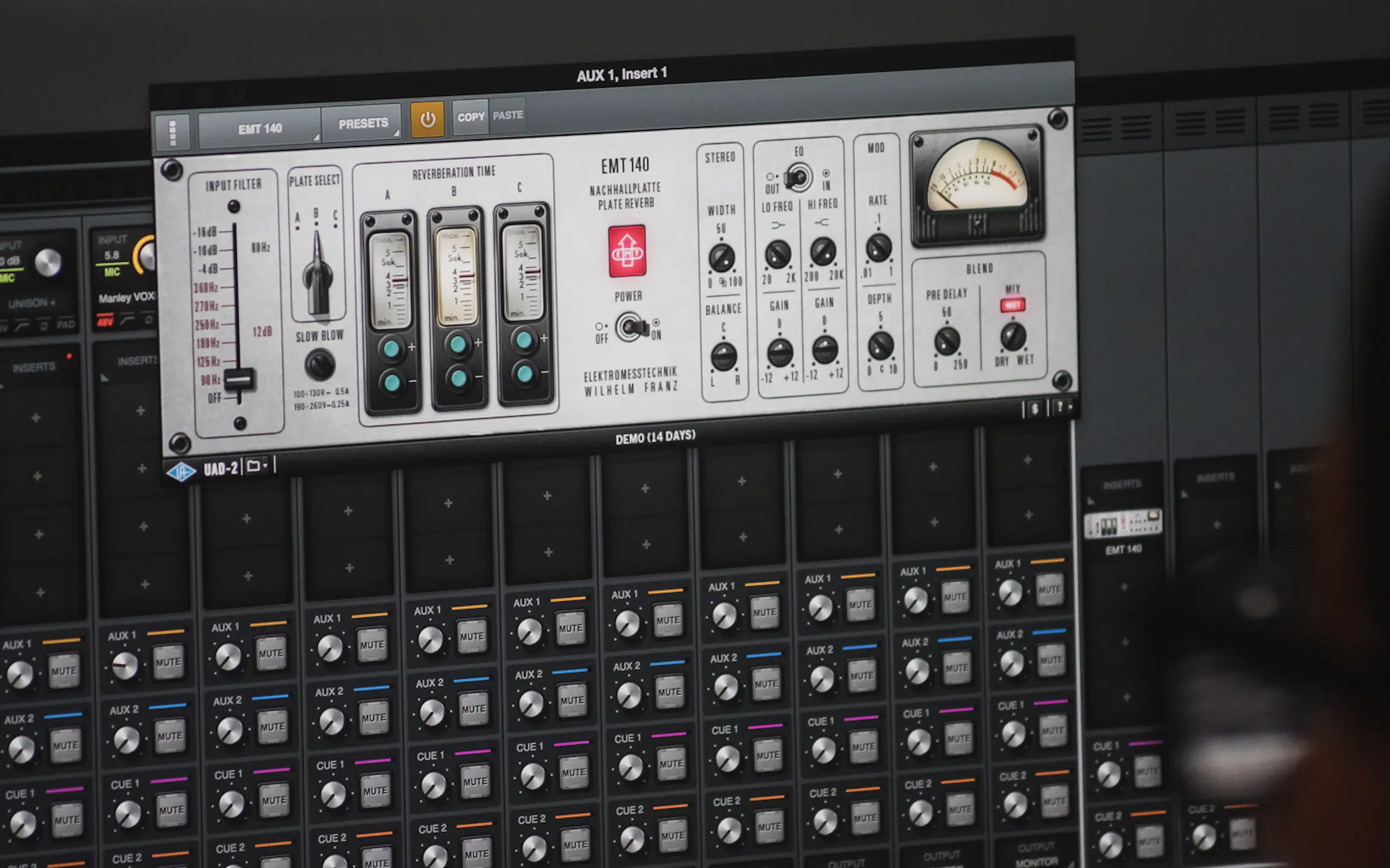
One of the biggest challenges in music production is creating a sense of depth and space, but luckily, that’s where plate reverb shines.
By adding a subtle layer of reverb to your track, you can create the illusion of depth.
It’s like adding a third dimension to your mix to make it feel more immersive and engaging.
But how do you add space without making your mix sound like it was recorded in a cavernous hall?
The key is to use plate reverb subtly.
A small amount can add a sense of space without making the mix sound distant or echoey.
And remember, the reverb should complement the original sound, not overpower it.
The Signal Path in a Plate Reverb Unit
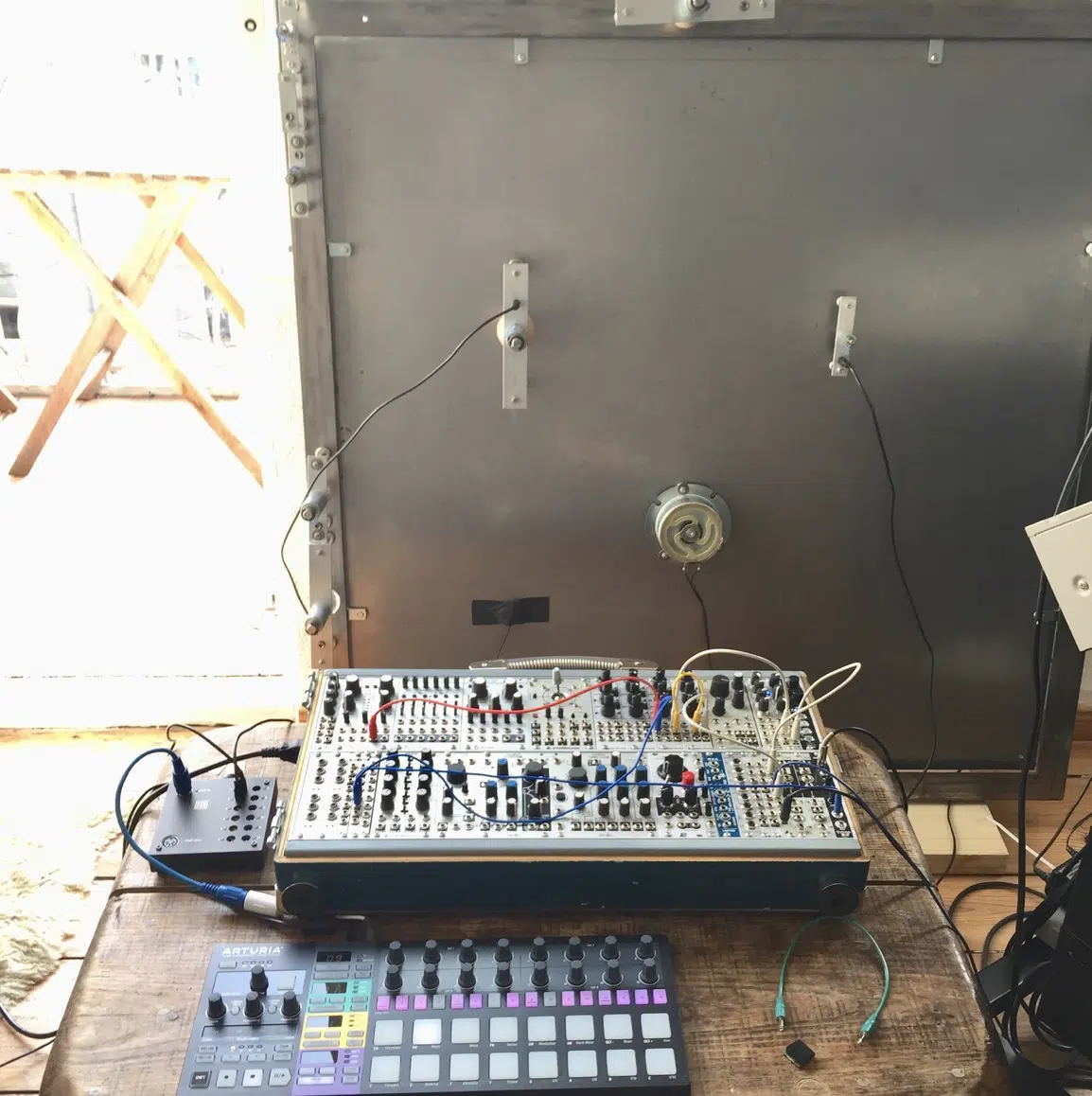
The signal path in a plate reverb unit is a fascinating journey.
It starts with the audio signal being sent to a transducer 一 which converts the electrical signal into mechanical vibrations.
These vibrations are then transmitted to a large metal plate, creating a complex pattern of sound bouncing around the plate (sound waves, to be more exact).
At the other end of the plate, another transducer picks up these vibrations and converts them back into an electrical signal.
This signal is then mixed back with the original sound creating the distinctive plate reverb effect.
It’s a complex process, but the result is a lush, dense reverb that’s hard to replicate.
Transducers, Metal Plates & Vibrations
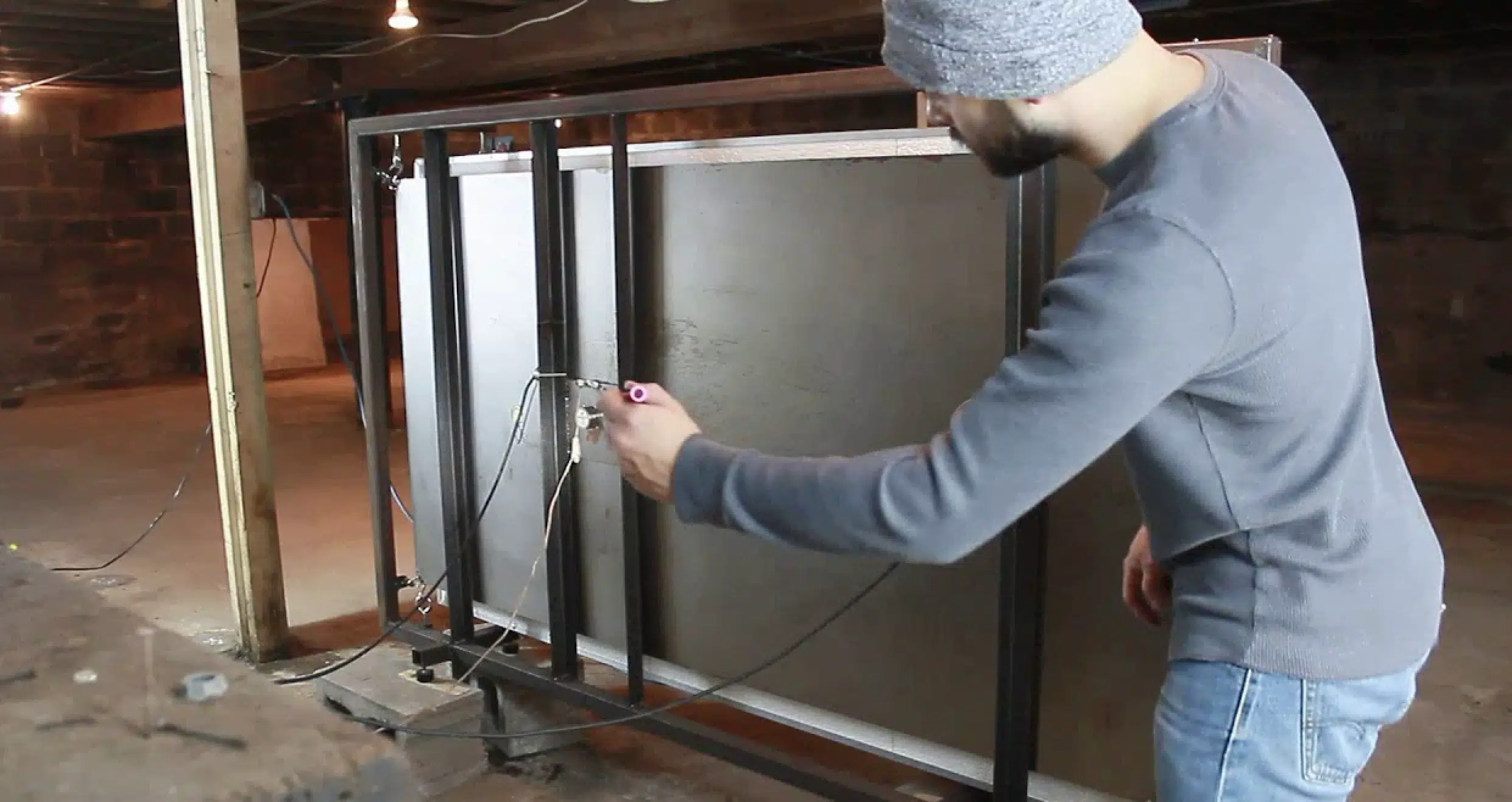
The metal plate is equally important and is typically made of a large sheet of steel plate (or steel plates).
Its size and thickness play a key role in the character of the reverb.
- A larger, thinner plate: creates a longer, more complex reverb.
- A smaller, thicker plate: produces a shorter, simpler reverb.
This is where the magic happens, where the signal becomes a symphony of bouncing sound waves.
The vibrations, created by the transducer and carried through the metal sheet, are the final piece of the puzzle.
They create a dense, complex reverb that’s unique to plate reverb units.
The way the sound waves bounce around the plate, interacting with each other, is what gives this type of reverb its distinct, lush quality.
The Science of Modulation in Plate Reverbs

Modulation is another crucial aspect of plate reverb.
It refers to the variations in the reverb caused by the constant movement of the metal plate.
These minute changes in the plate’s position create subtle shifts in the reverb’s pitch; adding richness and complexity to the sound.
But modulation isn’t just about the pitch…
It can also affect the decay time and the diffusion of the reverb.
By varying these parameters, you can create a wide range of reverb sounds 一 from a bright, shimmering reverb to a deep, dark reverb.
Best Reverb Plate Plugins of 2023
Now that you have a solid understanding of what plate reverb is, let’s break down the 5 best reverb plate plugins of 2023.
Other reverb plugins just can’t compare, so let’s dive in.
#1. Waves Abbey Road Plates
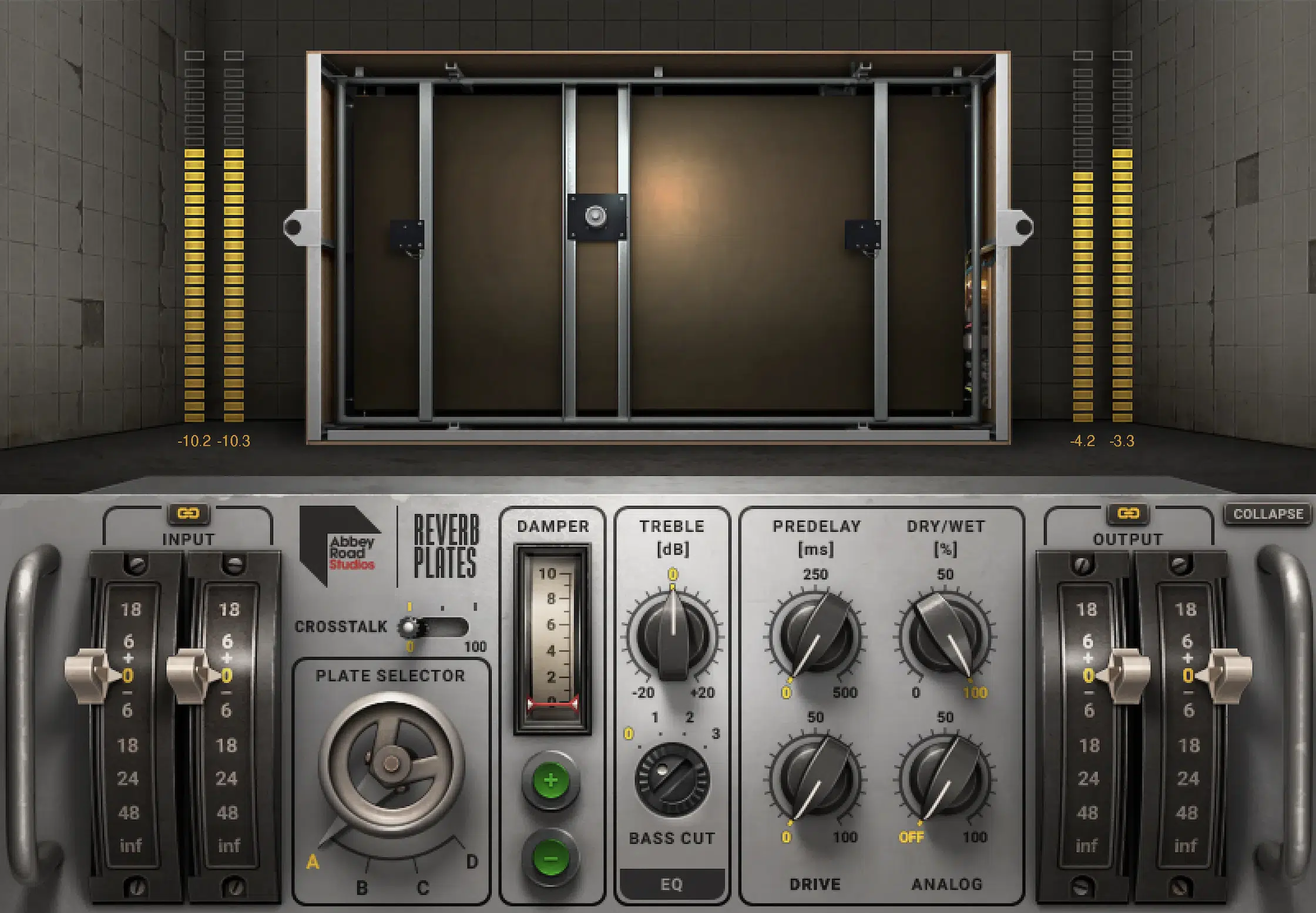
Waves Abbey Road Plates not only captures the magic of the original EMT 140 plate reverb but takes it a step further.
This reverb plugin lets you choose from four different plate reverb sounds, each providing a unique flavor.
The standout feature is the ability to adjust the ‘drive’ control, introducing harmonic distortion for a richer, vintage vibe.
The ‘damping’ control alters the reverb tail across high, mid, and low-frequency ranges 一 a feature that truly sets this plugin apart in terms of versatility.
#2. Soundtoys Little Plate

Soundtoys Little Plate maintains an unparalleled level of simplicity without compromising its power.
It offers an extended decay time up to infinity, allowing for endless sustain that can morph your sound into a lush soundscape.
The ‘low cut’ control is a prime feature that enables you to keep your mix clean by preventing the reverb from clouding the low-frequency range.
For a plugin that is deceptively simple, the Soundtoys Little Plate packs a serious punch.
#3. Valhalla Plate by Valhalla DSP Plugins
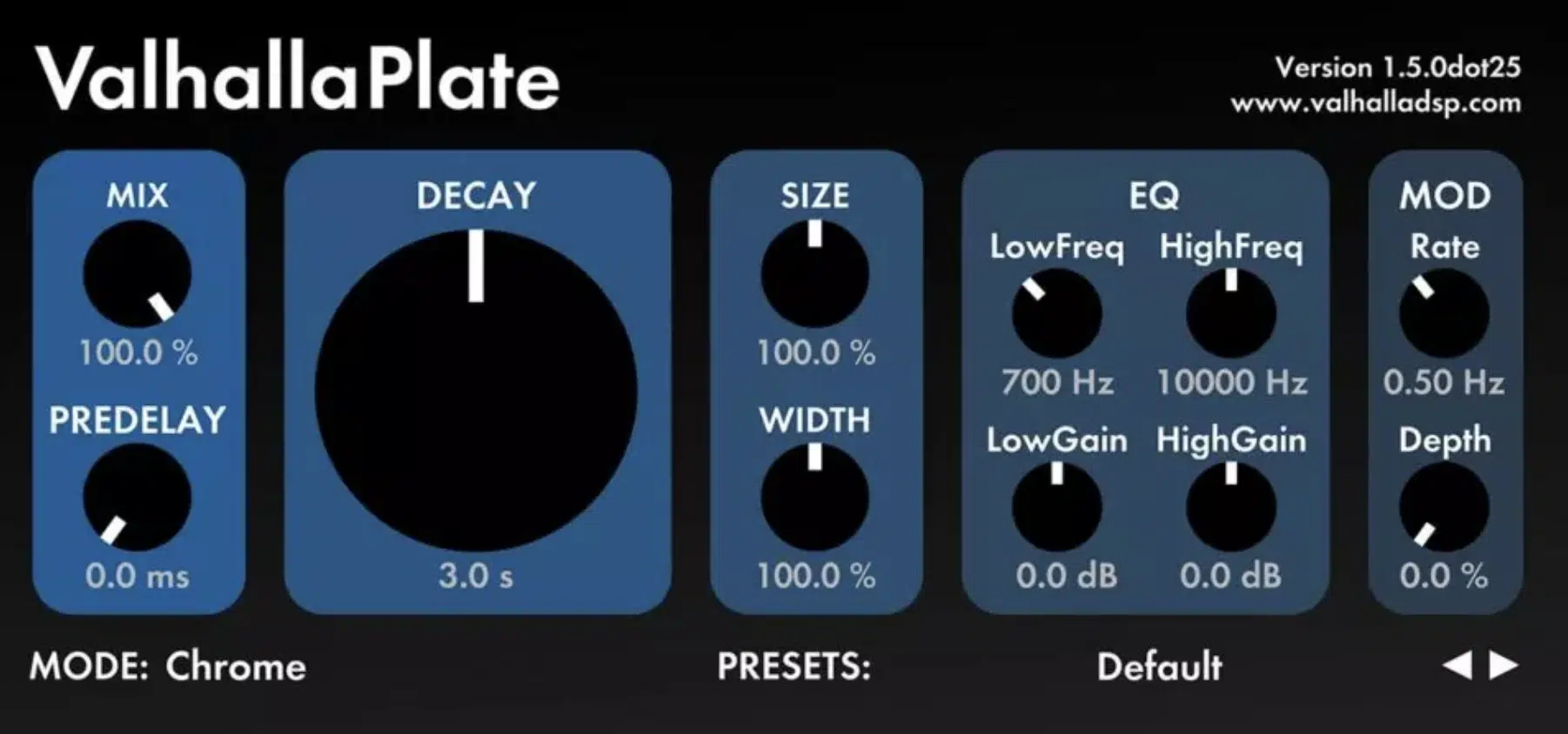
Valhalla Plate stands out in terms of variety.
It offers a dozen different algorithmic models, each tailored to deliver a unique reverb flavor.
The modulation rate and depth controls are standout features that let you breathe life into your reverbs, making them move and swirl.
The ‘decay’ control lets you shape the reverb tail from tight ambient sound to vast, lingering reverberations.
It’s a truly versatile tool, and awesome at making your tracks stand out.
#4. Universal Audio Lexicon
![]()
Universal Audio Lexicon is not just a reverb plugin but a piece of history.
This reverb plugin is a faithful emulation of the revered Lexicon 224 hardware plate reverb unit.
Its defining feature is the ‘diffusion’ control, which adjusts the complexity of the reverb tail, letting you go from focused reflections to a dense reverb haze.
The ‘bass and treble’ decay parameters let you shape the frequency response of the reverb, further enhancing its versatility.
All in all, this plugin is an astonishingly accurate and extremely desirable choice for any of your reverb needs.
#5. Waves H-Reverb
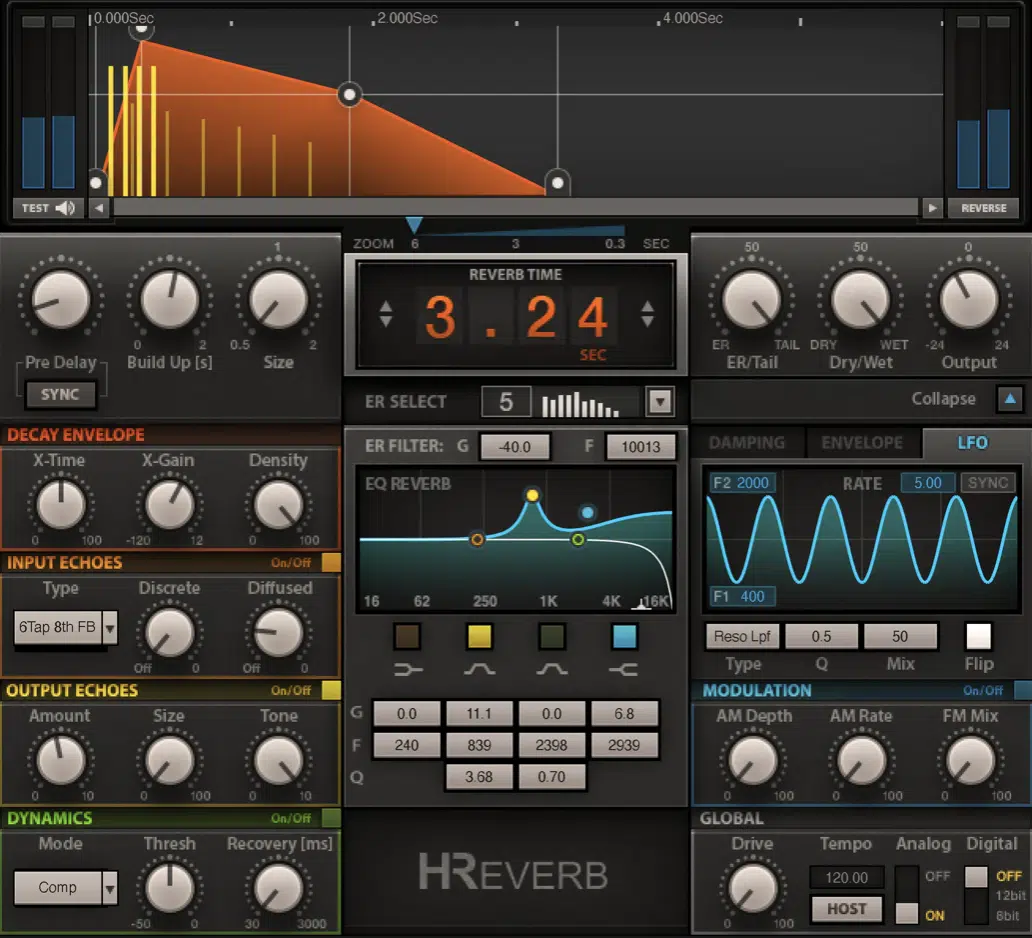
Waves H-Reverb is a fusion of vintage and modern, providing the best of both worlds.
The standout feature is the ‘analog’ control that introduces modeled analog circuit behaviors and non-linearities, giving the reverb a characterful flavor.
The ‘input echo’ and ‘output echo’ controls offer built-in delay lines that can be creatively used for echo effects within the reverb itself.
This feature alone sets this plugin apart from the rest.
The craziest part is it doesn’t even sound like artificial reverberation; it sounds natural as can be.
Make sure to give it a try yourself.
Tips & Tricks for Mastering Plate Reverb
To help you master plate reverb and all its unique purposes, here are a few expert tips & tricks.
-
Modulating Reverb Times for a Richer Mix
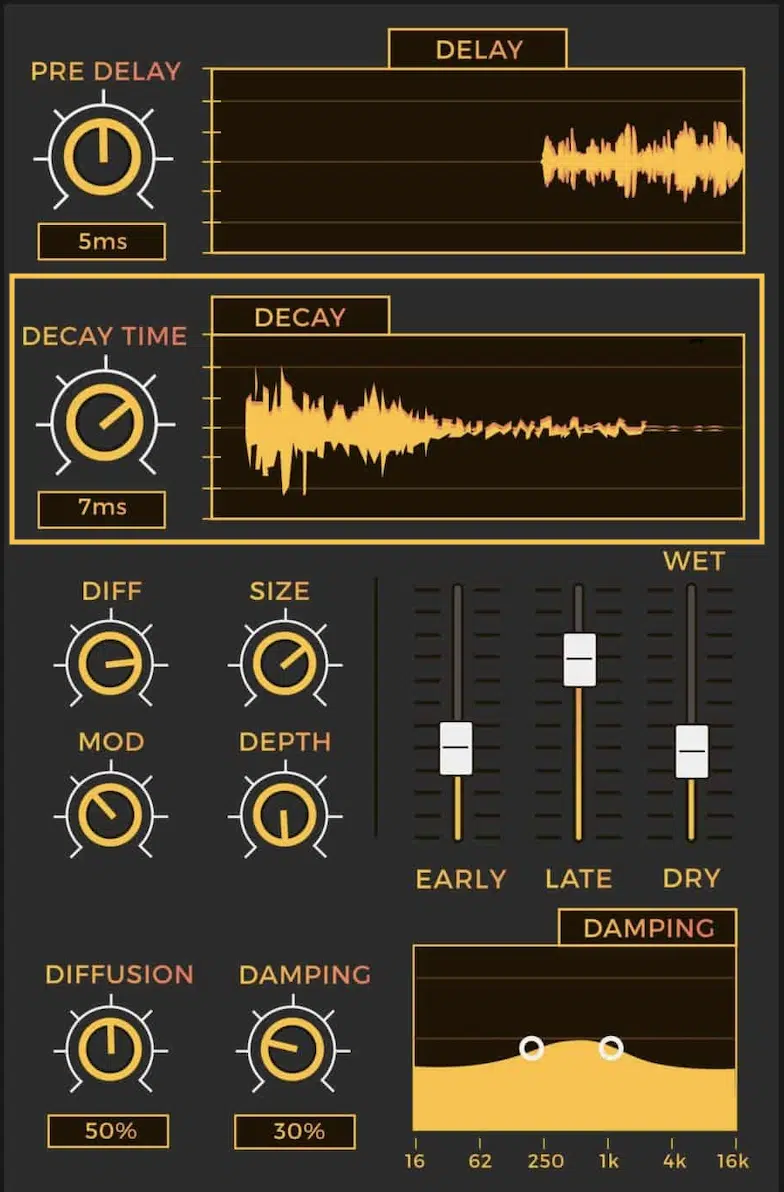
Modulating reverb times can add a dynamic element to your mix.
By varying the decay time of your plate reverb, you can create a sense of movement/depth and emulate natural reverbs.
This can be especially effective on sustained sounds like vocals, strings, or pads.
Start with a shorter decay time for the initial part of the sound.
Then, gradually increase it for the tail, creating a lush, evolving reverb effect.
-
Layering Reverbs
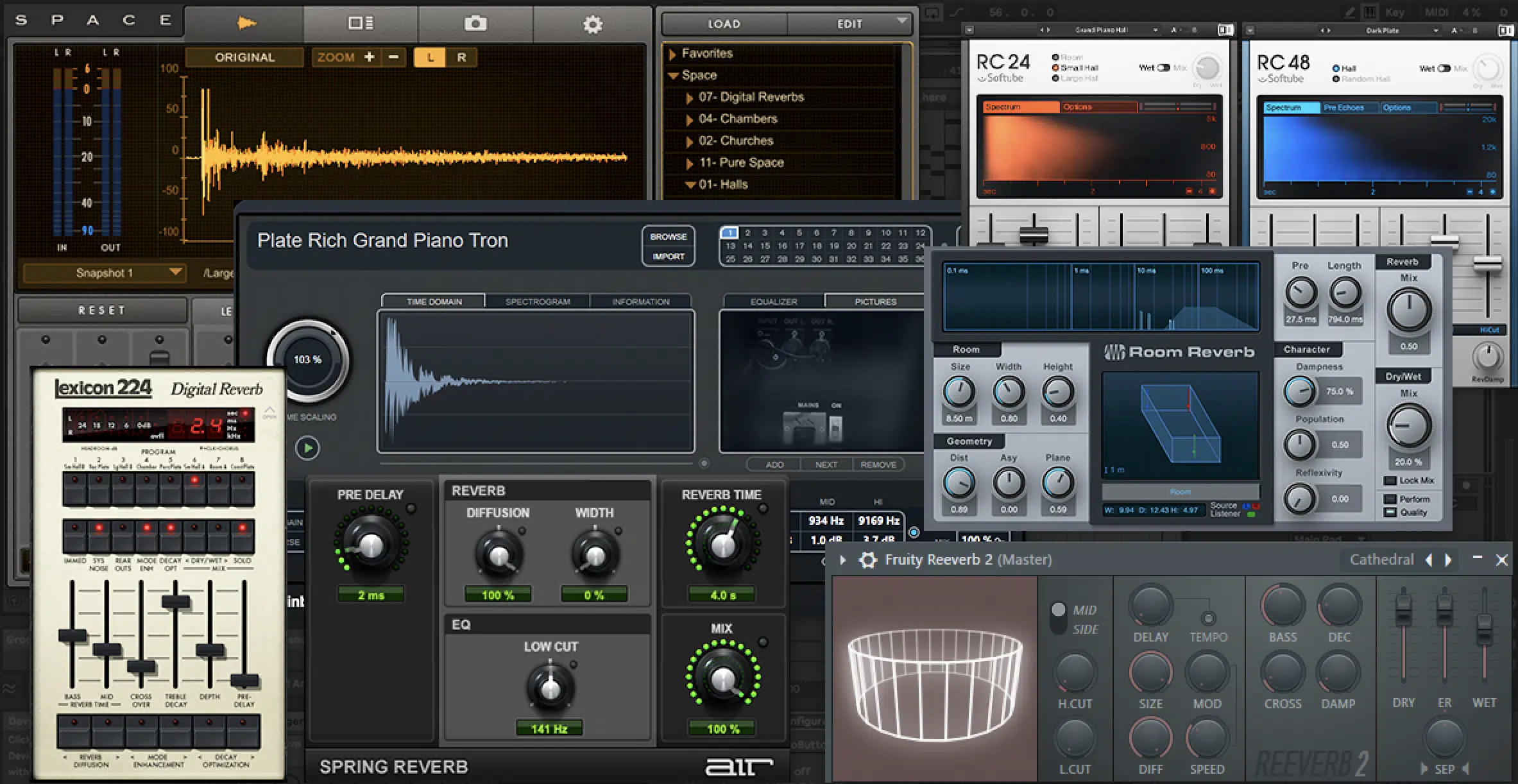
Layering reverbs is a pro trick to create a sense of depth and complexity in your mix.
Try using a short, bright plate reverb on your vocal or lead instrument, then layer a longer, darker spring reverb underneath.
This can create a rich, three-dimensional sound, with the reverb providing clarity and presence, and the spring reverb adding depth and space.
-
Achieving a Bright, Classic Sound
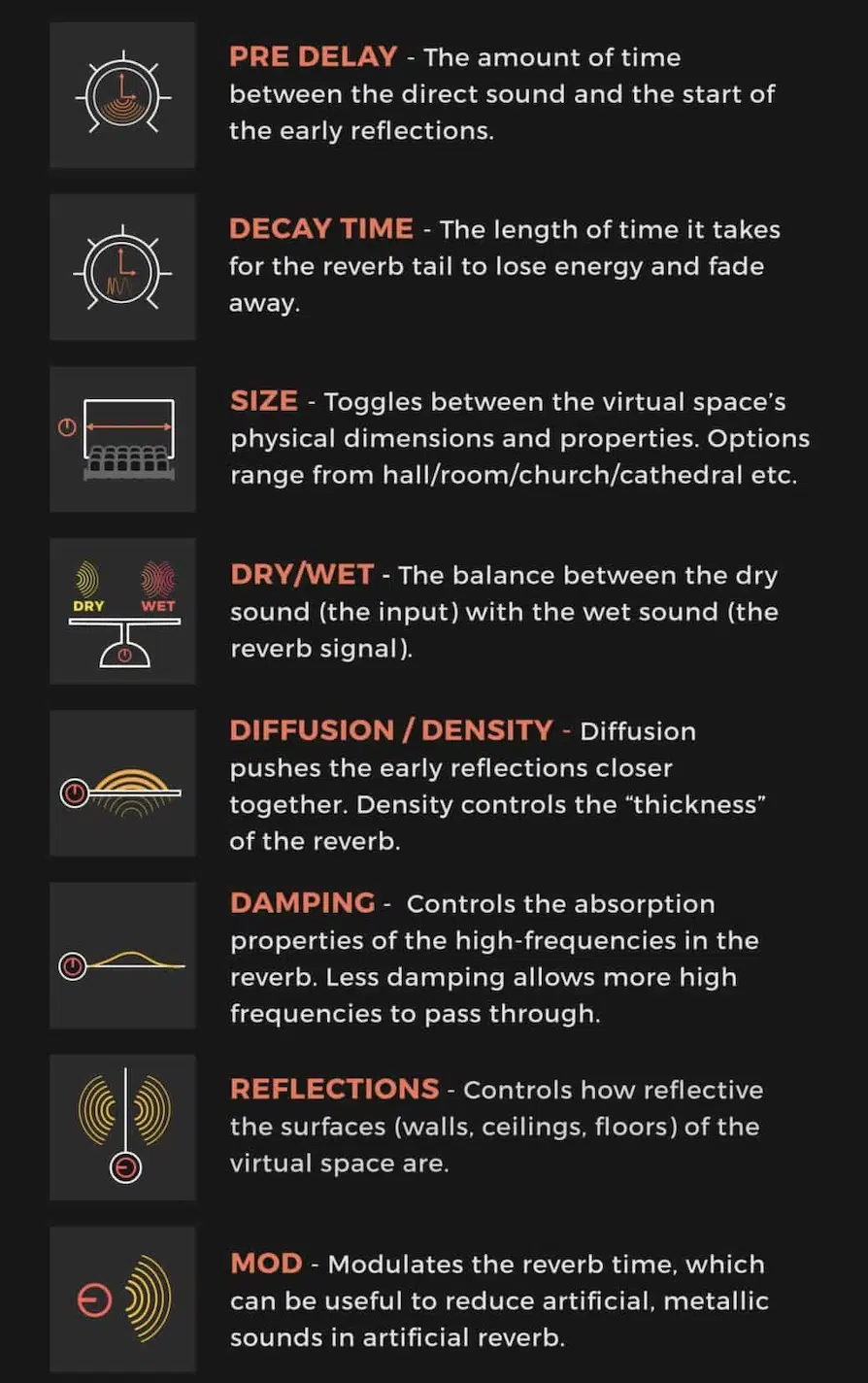
For achieving a bright, classic sound, this type of reverb is your best friend.
The key is to use a plate reverb with a relatively short decay time and a bit of pre-delay.
This can give your sound a sense of space without washing it out.
The trick is to EQ your reverb: a high-pass filter can remove unwanted low frequencies, and a boost in the upper mids can add a nice shine.
It’s a tip that can work wonders on vocals, drums, and virtually any instrument in your mix.
-
Enhancing Drums
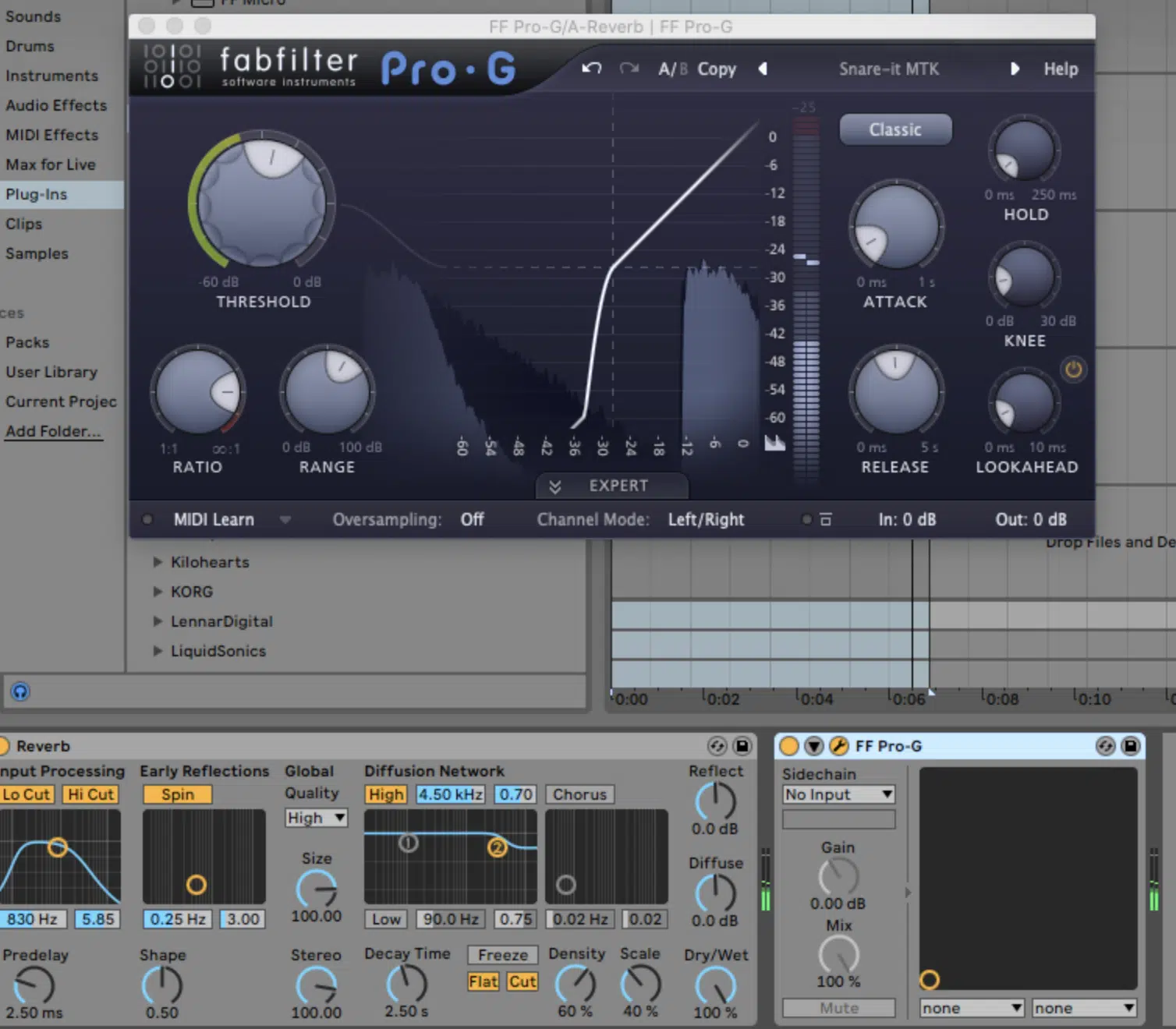
Drums and reverb have a long, beautiful history together.
To enhance the snare, try using a bright plate reverb with a moderate decay time.
For toms and kicks, a darker plate reverb can add depth without muddying the mix.
And don’t forget about the overheads 一 a touch of plate reverb can create a sense of space and cohesion.
Just remember: when it comes to drums, less is often more.
Plate Reverb: Final Thoughts
After reading this article, it’s clear to see that plate reverb is a super unique sound effect that can elevate your music production game in a major way.
Understanding the mechanics and nuances of plate reverb, plus being familiar with some of the best plugins on the market, can truly make a difference in your mixes.
To put your newfound knowledge into practice, you should experiment with some free, high-quality MIDI melodies.
Unlike most sample packs that are already processed and have reverb applied, these MIDI melodies give you the freedom to incorporate your own custom effect chain.
Meaning, you can experiment to your heart’s content with different types of reverb, including, of course, plate reverb.
Imagine the creative possibilities… you could take a simple melody and turn it into an ethereal soundscape with the lush, bright tones of a plate reverb.
In the world of music production, knowledge, and creativity go hand in hand.
The more you understand the tools at your disposal, the more effectively you can use them to bring your unique musical vision to life.
With plate reverb in your toolkit and a pack of top-notch MIDI melodies at your fingertips, there’s no limit to what you can create.
Until next time…







Leave a Reply
You must belogged in to post a comment.